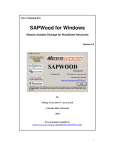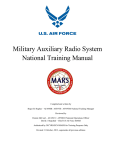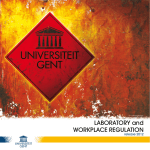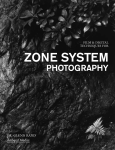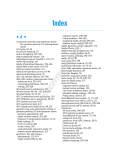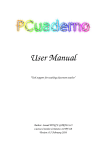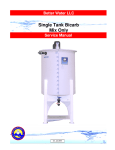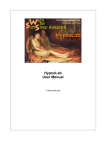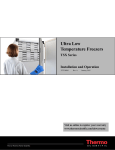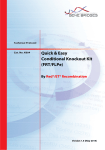Download Chapter 7: Museum Collection Storage
Transcript
Chapter 7: Museum Collection Storage Page A. Overview.......................................................................................................................................7:1 What is museum collection storage?..............................................................................................7:1 How does collection storage fit into my park’s preventive conservation program? ..........................7:1 What is a collection storage system? .............................................................................................7:1 B. Standards and Requirements for Collection Storage................................................................7:2 What are the museum collection storage standards and requirements? .........................................7:2 Where do I start in establishing my collection storage needs?........................................................7:3 What are the collection storage facility and space requirements?...................................................7:3 How do I ensure that I have adequate space to store the collection? .............................................7:3 What general building features contribute to storing the collection?................................................7:3 What design loads should my storage space or facility have? ........................................................7:5 Where do I find additional information on storage space requirements? .........................................7:6 Why should my collection storage space be used exclusively for storing collections?.....................7:6 Where should I locate the research space? ...................................................................................7:6 Where should I locate work and office spaces?..............................................................................7:6 How do I establish proper physical security for the collection storage space?.................................7:6 How important is fire protection in the storage space? ...................................................................7:6 What should the collection storage environment be? .....................................................................7:7 What are museum storage equipment and container requirements? ..............................................7:7 Does housekeeping have a role in collection storage?...................................................................7:7 C. Planning Collection Storage Space............................................................................................7:8 How should I plan my museum storage space? .............................................................................7:8 What is a Collection Storage Plan (CSP)? .....................................................................................7:8 What does the collection storage chapter or section of a CMP, CCS, or archival assessment contain?.....................................................................................................7:9 Who can write a collection storage planning document? ................................................................7:9 How much does a storage planning document cost? .....................................................................7:9 Where do I get funding to do a collection storage planning document? ..........................................7:9 D. Assessing Collection Storage Needs........................................................................................ 7:10 How do I assess the collection?.................................................................................................... 7:10 How do I assess physical security needs? .................................................................................... 7:10 How do I assess fire protection needs? ........................................................................................ 7:11 How do I assess environmental monitoring and control needs? .................................................... 7:11 How do I assess museum storage equipment needs? .................................................................. 7:13 How do I assess object storage techniques and methods? ........................................................... 7:14 Where do I include technical supporting information and drawings such as floor plans in the storage planning document? ............................................................................................ 7:14 E. Assessing the Current Collection Storage Facility or Space ................................................... 7:14 How do I assess the existing storage facility or space? ................................................................. 7:14 How do I represent and record information about the storage space and structure?...................... 7:15 F. Planning a New or Upgraded Storage Space............................................................................ 7:16 How do I determine the storage equipment needed? .................................................................... 7:16 How do I determine how much space is needed to store my collection?........................................ 7:16 What process do I use to evaluate potential storage locations?..................................................... 7:16 What storage space alternatives should be examined?................................................................. 7:16 What occurs in the evaluation, development, and recommendation phases of a value analysis?... 7:18 What other storage factors should I consider? .............................................................................. 7:18 G. Housing Museum Objects.......................................................................................................... 7:19 Why is it important to use specialized museum storage equipment? ............................................. 7:19 What types of equipment does the NPS use for storing museum collections? ............................... 7:19 What are some general considerations when using museum equipment?..................................... 7:20 H. Using Containers and Supports ................................................................................................ 7:21 Why is it important to use storage containers and supports?......................................................... 7:21 What kinds of containers and supports should I use for storing museum collections?.................... 7:21 Where do I find information on techniques for storing different types of museum objects?............. 7:22 I. Storage of Museum Collections Subject to the Native American Graves Protection and Repatriation Act of 1990 (NAGPRA) ....................................................................................... 7:22 What is NAGPRA? ....................................................................................................................... 7:22 What types of items subject to NAGPRA are found in NPS museum collections?.......................... 7:23 Are there any special storage requirements for items subject to NAGPRA? .................................. 7:23 How should I store collections subject to NAGPRA?..................................................................... 7:23 Whom should I contact for assistance?......................................................................................... 7:24 J. Bibliography ............................................................................................................................... 7:25 K. List of Figures ............................................................................................................................ 7:28 CHAPTER 7: MUSEUM COLLECTION STORAGE A. Overview 1. What is museum collection storage? 2. How does collection storage fit into my park’s preventive conservation program? Museum collection storage is both a space and a process. • It is space that you dedicate to storing museum objects, natural history specimens and archival items. It is space that is either designed or upgraded for the maximum protection and optimum use of the collection. • It is the process of properly containing and caring for the museum collection while it is in the collection storage space. Each decision you make about storage should consider how changes would improve the protection and preservation of the museum collection. Good collection storage is a major component of a preventive conservation program to preserve your museum collection. A well-planned and organized storage space reduces the risk to the object. Deterioration, damage, or loss will be minimized if you have: • proper storage techniques • good handling practices (see Chapter 6) • effective security and fire protection (see Chapter 9) • appropriate environmental conditions (see Chapter 4) • a pest free environment (see Chapter 5) A well-planned and organized storage space also ensures that the objects are accessible. When you place an object on exhibit you usually compromise the conditions that are best for preservation. However, collection storage is a different matter. You can achieve ideal preservation conditions for objects that you keep in storage. 3. What is a collection storage system? NPS Museum Handbook, Part I (1999) Preserving museum objects in storage involves evaluating the total museum storage system housing the collection. A collection storage system is the protective envelope surrounding the collection. It includes three levels of containment: • the facility or space • the equipment • the containers 7:1 Although museum collection storage varies from park to park, the factors that need to be considered to properly house a collection remain the same. Evaluate each level of the system and adapt it to meet your park’s specific collection preservation and protection needs. Be practical and evaluate the space available to house the collections as well as the cost, both in funds and staff time available. The levels of containment in a collection storage system are illustrated in Figure 7.1. Each level adds additional protection to your collection by shielding it from the agents of deterioration. B. Standards and Requirements for Collection Storage 1. What are the museum collection storage standards and requirements? Museum collections require special storage conditions. Standards and requirements for managing museum property are based on Departmental and NPS policy and professional museum practices. The Interior Departmental Manual, Part 411, Policies and Standards for Managing Museum Collections, Chapter 3, provides departmental standards for museum property storage. The NPS Management Policies (p.5:13 ) states: “The National Park Service will employ the most effective concepts, techniques, and equipment to protect cultural resources against theft, fire, vandalism, environmental impacts, and other threats without compromising their integrity or unduly limiting their appreciation by the public.” The “NPS Checklist for Preservation and Protection of Museum Collections" provides general standards for collection preservation and protection. See Appendix F: NPS Museum Collections Management Checklists. NPS collection storage standards can be summarized as follows: Safe and secure storage of museum collections requires dedicated space. You must use museum storage areas only for museum collections. To the extent possible, separate museum storage from all other uses, including office space and research and work areas. Museum collections require suitable and sufficient space. The space you select for museum storage must be adequate to accommodate the particular characteristics and quantity of objects, specimens, and archival items you have in your collection and provide adequate space to accommodate reasonable growth of the collection. Organize the space to allow for the efficient use of curatorial equipment and techniques and to provide for effective access and optimum preservation of the museum collection. House objects in appropriate containers and package objects with appropriate materials. 7:2 NPS Museum Handbook, Part I (1999) 2. Where do I start in establishing my collection storage needs? Complete the “NPS Checklist for Preservation and Protection of Museum Collections.” (See Appendix F: NPS Museum Collections Management Checklists.) This checklist helps you evaluate your collection storage needs in the following areas: • facility and space requirements • protection requirements (physical security and fire protection) • environmental requirements • museum equipment and container requirements • housekeeping requirements You complete the checklist using the Automated Checklist Program found in the Utilities Module of ANCS+. See Appendix G in the ANCS+ User Manual for more information. 3. What are the collection storage facility and space requirements? Facility and space requirements deal with space adequacy, construction features, and design loads for collection storage. Make sure the collection has suitable and sufficient space for proper storage. Suitable space is planned space that has been evaluated for its adequacy for storing museum objects. Outbuildings, closets, and unimproved basements and attics are not suitable space. These inadequate spaces rarely contribute to the preservation and effective use of a collection. The following guidance elaborates or expands on the standards in Appendix F. 4. How do I ensure that I have adequate space to store the collection? The storage space must be large enough to accommodate the existing collection as well as the projected growth of the collection over the next 10 years. Your space should: • allow use of proper storage equipment and techniques • incorporate aisles at least 48" wide between rows of equipment; this width allows safe handling and movement of drawers, cabinet doors, and larger objects Make sure the space allows movement of personnel, equipment and objects in and out without hindrances such as inadequately sized doors; narrow, winding, or steep stairs; or passageways with low ceilings. Carefully plan and organize your storage space to make the collection easy to access for study, exhibition, or accountability. 5. What general building features contribute to storing the collection? NPS Museum Handbook, Part I (1999) Collection storage facilities and spaces should be constructed to meet the following requirements: 7:3 • Make sure the storage space is not located on a 100-year floodplain. This is in accordance with Executive Order 11988, "Floodplain Management," May 24, 1977 (42 USC 4321), and Natural Resources Management Guideline (NPS-77). • Use space that is constructed of fire-resistant or fireproof materials. Wood framed walls and ceilings should be constructed with gypsum wallboard to achieve a minimum one-hour fire rating (some codes may require a two-hour fire rating). • Use space with as few windows and doors as practical to enhance security and environmental control, but not so few as to be in violation of health, safety and fire codes. See National Fire Protection Association NFPA 101, “Life Safety Codes,” 1997 Edition, and OSHA Standard 1910.36, “General Requirements, Means of Egress.” • Use space with as few exterior walls as practical. This will minimize the chance of condensation on walls and windows during seasonal and diurnal temperature changes, enhance security, and increase energy efficiency. • Make sure the space is free of water and sewer pipes and valves that can burst or leak and cause damage. Note: Water lines associated with fire suppression systems are allowed. Spaces equipped with fire sprinkler systems should have adequate floor drain(s) with backflow check valve(s). • Make sure space is free of electric junction boxes, gas and electric meters, and gas lines. This will limit the need for access by non-curatorial staff and minimize security concerns. • Store only collections in the space. Local and national building codes usually rate collection storage space as “storage occupancy.” Locate work, office, research, and supply storage areas close to, but not within, the storage space. • Insulate the space so it will maintain a stable environment that protects the objects from adverse temperature and relative humidity conditions and damage from biological infestations. Insulate walls to a minimum R-19 rating (usually a 6" thickness of spun glass bat insulation) and the ceiling to a minimum R-30 rating (usually a 9" thickness of spunglass bat insulation). Install a vapor barrier in walls, ceilings, and floors. • Require woodframe walls to be a minimum of 6" thick, constructed with 6" metal or wood studs. This thickness of wood-frame wall construction provides structural strength and is capable of accommodating the required insulation. • Use metal hollow-core or wooden solid-core doors equipped with mortise or key-in-knob and deadbolt locks for all entrances into the storage space. Door hinges should be on the interior side of the door. If exterior hinges are used, spot weld hinge pins to prevent easy removal. 7:4 NPS Museum Handbook, Part I (1999) • Install rigid foam insulation and a vapor barrier in concrete floors on grade. Make sure the level of the top of the concrete slab is at least 6" above the grade level of the soil. • Seal concrete floors with a vapor-proof epoxy or urethane paint or cover with dust impervious commercial composition, quarry or ceramic tiles. Use dust impervious commercial composition, quarry or ceramic tiles as a floor finish over plywood sub floor sheathing. • Make sure all electrical systems and equipment are UL listed and installed in full compliance with local and national electrical codes. You will need outlets to power supplemental environmental conditioning equipment, to allow for any task lighting, and to allow for use of vacuum cleaners. • Make sure the space is free of ambient light sources that can damage objects. Use non-quartz/halogen incandescent or UV filtered fluorescent lighting and do not exceed 200 lux or 20 footcandles. Turn lights off when the storage space is unoccupied. • Paint walls and ceiling with paint containing titanium dioxide pigment. Paint with titanium dioxide will absorb ultraviolet radiation emitted by ambient or artificial lighting. 6. What design loads should my storage space or facility have? Your storage facility or space should be designed or modified to meet the following requirements and recommendations: • Use space capable of sustaining a live floor load of 150 pounds per square foot. Floors constructed to a lesser load capacity may be considered if you install spot load supports (usually post supports from below) and arrange equipment to take advantage of existing structural supports (usually equipment arranged around the perimeter of a room close to load bearing walls). Consult a structural engineer to determine the suitability of a floor and the placement of supports and equipment. A live floor load of 200-250 pounds per square foot is recommended if you use a moveable aisle (compactor) storage system. Consult a structural engineer to determine the required load rating for a floor supporting collections of exceptional weight. • Design and construct roofs of storage spaces or facilities to accommodate the snow load of the area. • Design or retrofit structures in areas of seismic activity to minimize earthquake damage. • Consider reinforced concrete or masonry construction with a wind load rating of 110 miles-per-hour or higher for new construction of standalone storage facilities in areas susceptible to severe wind conditions. Fasten roofs to the wall and/or foundation structural components so the roof can withstand hurricane force winds. NPS Museum Handbook, Part I (1999) 7:5 7. Where do I find additional information on storage space requirements? Refer to the bibliography at the end of this chapter and the Conserve O Gram series for additional information and specific guidance for planning collection storage spaces. 8. Why should my collection storage space be used exclusively for storing collections? Separate curatorial office, work, and research spaces from the space housing your museum collection to minimize environmental impacts on the objects and security risks. Refrain from combining storage space with other functions for the following reasons: • Collection security generally decreases; theft, mishandling, and vandalism increase with storage room visitation and use. • People working in the storage area increase the number of air exchanges the area must undergo. Air exchanges cause temperature and relative humidity levels to fluctuate, resulting in the possible deterioration of objects. • Work areas require lighting levels that may cause damage to unprotected light-sensitive objects. • Movement of people into and within the area tracks in soil and disperses dust into the air, which in turn, is deposited on surfaces of equipment and objects. • The chance of pest infestation increases. Store flammable liquids and materials, curatorial supplies, audiovisual equipment, and other interpretive materials outside the museum storage space. These actions will reduce the risk of fire and lessen clutter within the storage space. 9. Where should I locate the research space? Locate research space convenient to, but not within, the collection storage space. Research is one of the fundamental uses of a museum collection and the space for the research function has specific requirements. Refer to the Museum Handbook, Part III (MH-III), Appendix D: Guidance on Planning for a Research Space, for information on planning your research space. 10. Where should I locate work and office spaces? Like research space, work and curatorial office areas should be convenient to, but not included in, the storage space for the reasons stated in number 8 above. 11. How do I establish proper physical security for the collection storage space? Your collection must have appropriate security. You will need to conduct an assessment of the security risks to the stored collection. Refer to Chapter 9 of this handbook for details on conducting a risk assessment and for specific security guidance. 12. How important is fire protection in the storage space? Collection storage houses the majority of the museum collection and that space must be assured the safeguard of early fire detection and suppression and prior planning to guarantee the safety of the collection and the personnel who use and care for it. Refer to Chapter 9 of this handbook for information on conducting a fire risk assessment and for specific fire protection guidance. 7:6 NPS Museum Handbook, Part I (1999) 13. What should the collection storage environment be? Your storage space should maintain an environment conducive to museum object preservation. A proper collection storage environment is one that: • controls the range of temperature and relative humidity • reduces the fluctuations of temperature and relative humidity • prevents damage resulting from air pollutants • prevents damage resulting from light • eliminates biological infestations by insect and rodent pests Refer to Chapters 4 and 5 for guidance on monitoring and controlling the collection storage environment and on establishing an Integrated Pest Management (IPM) Program to monitor pest activity. 14. What are museum storage equipment and container requirements? The use of specialized storage equipment and containers will help you preserve and effectively manage your museum collection. The use of proper storage cabinets, shelves, racks, and containers will make it easier to use the space and access the collection. Storage equipment will prevent damage from agents of deterioration. Appropriate storage containers buffer the objects from their immediate environment by being chemically stable and neutral and by providing physical protection. NPS Tools of the Trade provides a list of materials and equipment suitable for managing museum collections. It also provides a vendor address list. Refer to Section G and the bibliography of this chapter for specifics on collection storage equipment and containers. 15. Does housekeeping have a role in collection storage? Yes. Because museum objects are stored in a separate dedicated space and not always on view to staff, there is always the possibility of neglect. Good housekeeping in storage spaces is essential to a park's preventive conservation program. You should: NPS Museum Handbook, Part I (1999) • Establish and follow a museum housekeeping plan. Refer to Chapter 13 and the ANCS+ User Manual for guidance on establishing a housekeeping plan. • Prohibit smoking, eating, and drinking in the storage space. • Implement and follow an IPM program. • Routinely dust and vacuum the storage area including cabinets and shelving. Vacuum using a High Efficiency Particulate Air (HEPA) vacuum and dry mop floors to reduce levels of dust and soil. 7:7 C. Planning Collection Storage Space 1. How should I plan my museum storage space? Planning for museum storage is essential to ensure maximum preservation and optimum access to the collection. Planning a collection storage space will help ensure that the necessary requirements are met. The process of collection storage planning may focus on: • the development of a new facility • the rehabilitation or upgrading of an existing space or facility • a specific aspect of museum storage such as determining equipment and space requirements for a collection, determining a special layout of equipment, or outlining specific techniques for housing museum objects on shelves or in cabinets In the National Park Service, the product of collection storage planning may be a Collection Storage Plan (CSP) or a chapter or section on museum collection storage in a Collection Management Plan (CMP), a Collection Condition Survey (CCS), or an archival assessment. Regardless of the product, some or all of the elements of a CSP, described below, are incorporated into the planning process. 2. What is a Collection Storage Plan (CSP)? A Collection Storage Plan (CSP) is an official stand-alone document developed to help a park or center improve the storage conditions for a museum collection. It may be prepared to solve specific storage problems, guide renovation of an existing space into collection storage, or guide the design of a new facility. A CSP must include the following core elements: • a determination of the size of storage space needed • a determination and listing of specialized storage equipment needed • a floor plan illustrating a recommended layout of equipment • an assessment of object storage techniques and methods and recommendations for improvement • a solution for park-specified or urgent storage problems A CSP may also include the following: 7:8 • an assessment of the nature of the collection • an assessment of the existing collection storage facility and/or space(s) NPS Museum Handbook, Part I (1999) • an assessment of the existing storage conditions in comparison with NPS standards and requirements for storage • identification and discussion of storage space alternatives The specific nature of the collection and the availability of funding and staffing are factors to consider when selecting alternative storage options. 3. What does the collection storage chapter or section of a CMP, CCS, or archival assessment contain? The storage chapter or section of a CMP, CCS, or archival assessment contains some or all of the elements of a CSP. However, it is incorporated into the larger report instead of being a stand-alone document. 4. Who can write a collection storage planning document? For objectivity and diversity of views, NPS curatorial staff from outside the park usually prepare a collection storage planning document. You can also procure the services of a museum professional or architectural/engineering firm with expertise in collection storage planning. Contact the regional or support office (SO) curator for guidance on writing a storage planning document. The Museum Management Program can provide examples of a CSP. 5. How much does a storage planning document cost? Producing a basic CSP (incorporating the core elements) requires funds for: • approximately 2-4 weeks of the preparer’s time • travel and expenses for a 1-2 week site visit • printing and duplicating the document To produce a CSP with more than the core elements will require additional time and increased costs. Consult the Cost Estimates Figure in Appendix F: NPS Museum Collections Checklists, for a current estimated cost to produce a CSP or storage planning document. 6. Where do I get funding to do a collection storage planning document? NPS Museum Handbook, Part I (1999) Possible funding sources to produce collection storage planning documents include: • Cultural Resources Preservation Program (CRPP) • Museum Collection Preservation and Protection Program (MCPP) • park or center base funding • park cooperating association donation account • special funding initiatives that may be announced 7:9 To obtain storage planning project funding, you must identify the need for a collection storage planning document: • in the NPS Checklist for Preservation and Protection of Museum Collections using the Automated Checklist Program in ANCS+. Identifying the need in the Checklist links the project to the NPS Strategic Plan (Goal Ia6) and the Government Performance and Results Act. • as a project statement in the Resource Management Plan (RMP). • as a project statement in the Performance Management Information System (PMIS). D. Assessing Collection Storage Needs 1. How do I assess the collection? 2. How do I assess physical security needs? 7:10 To assess the collection: • Examine the entire collection with emphasis on objects designated for storage. Also consider all objects that may eventually be placed in the storage space. • Note the types of objects, the quantities of each object type, the relative sizes, and required volumes for storage. For example, consider a hammer and a wagon. Both are historical objects and are made of more than one material, however, each object has different storage requirements and containment needs. • Note object types by discipline and material makeup. Note the types of objects that are extremely sensitive to the influences of temperature and relative humidity, light, and air pollution. • Identify the types and approximate quantities of objects that the park plans to acquire in the future. Study the park's approved Scope of Collection Statement for this information. In addition, consider the return of outgoing loans and temporary transfers, and future archeological and natural science research projects that may increase the size of the collection. Use the following guidance in assessing the physical security needs: • Conduct a physical security risk assessment as described in Chapter 9. • Note any extant intrusion alarm system (type, location of sensors, nature of monitoring, who responds, and response time) serving the space. NPS Museum Handbook, Part I (1999) 3. How do I assess fire protection needs? 4. How do I assess environmental monitoring and control needs? NPS Museum Handbook, Part I (1999) • Note the construction and locking mechanisms of doorframes and doors (metal, solid-core wooden, wooden hollow core, dead bolt locks). • Note how windows are secured (latches, plywood-covered, bars). • Identify the park staff who have keys to storage areas and park staff who require access but are not issued keys. Note whether staff members from other divisions need to enter or pass through the area to access major junction boxes or cleaning supplies. • Note any other functions that occur in the storage space. • If applicable, note any areas in the storage space where security is compromised. For example, is there easy access from an adjoining space such as through a dropped ceiling. • Note if a visitor/researcher log is used and maintained. Use the following guidance in assessing the fire protection system: • Conduct a fire protection risk assessment as described in Chapter 9. • Note any extant fire protection system. Include type of system (wet pipe sprinkler, water mist, Halon™, ionization, smoke, heat activated) serving the space. • Determine how the detection alarm is monitored, the responsible party for responding to an alarm, and the response time. • Check to ensure that the park's Structural Fire Plan is current and consistent with Director’s Order #58: Structural Fire Guidelines. The plan should clearly identify the pre-suppression actions for the responding authorities (for example, how to enter the storage space, or the priority list for evacuating objects). • Identify the number, types, and locations of hand-held fire extinguishers. Check extinguisher inspection tags and labels to be sure extinguishers are maintained. • Identify the closest water supply available to suppress a fire. In order to assess the collection storage environmental needs: • Become familiar with the information on environmental monitoring and control found in Chapter 4. • Note the readings at the time of the site visit for temperature, relative humidity, and light levels of the existing space. • Note the type of existing environmental monitoring equipment (hygrothermograph, hygrometer). 7:11 • Check to ensure that environmental monitoring equipment is properly calibrated and maintained. • Examine the data recorded on temperature and relative humidity within the storage space. In particular, note the following information: • • 7:12 − annual maximum and minimum temperature readings and relative humidity levels − monthly maximum and minimum temperature readings and relative humidity levels − maximum diurnal (24 hour) fluctuation for temperature and relative humidity on a monthly and an annual basis. Answer the following questions: − Do the records indicate the maintenance of a proper environment? − Do building features such as the climate control system (heating, ventilating, air-conditioning [HVAC]) or superior insulation and vapor barrier contribute to maintaining the environment? − Do the records indicate diurnal changes if HVAC equipment is turned off after working hours? Note the type of HVAC (air-handling) system in use (oil-fired furnace, heat pump, central air). Note whether the system is dedicated to controlling the environment within the storage space or the entire structure. In particular, note the following information: − location of the thermostat − location of air supply and return registers − how the air is filtered • Obtain manufacturer’s equipment operating manual. Determine maintenance history of equipment. • If applicable, determine if portable dehumidifiers, humidifiers, or air-purifiers have had an impact on controlling conditions. • Examine the data on visible and UV light levels in the storage space. Check fluorescent lighting to ensure that light filters are installed. Use an ultraviolet radiation monitor to take readings to ensure that filters are blocking ultraviolet light. • If there are windows in the space, note if: − the staff recorded light levels for both winter and summer months − blinds, curtains, or light filters have been installed NPS Museum Handbook, Part I (1999) 5. How do I assess museum storage equipment needs? NPS Museum Handbook, Part I (1999) • Note levels of dust and possible sources of dust. Note the types of dust covers used to protect objects stored on open shelving (for example, plastic, muslin). • If available, obtain measurements for sulfur dioxide, hydrogen sulfide, and oxides of nitrogen from the Environmental Protection Agency or a local agency. Attempt to identify industry in the area that could produce pollutants that affect the collection. If appropriate, examine data available on pollutant readings from a number of years. Note any trends and describe the existing and potential threats to the collections. • Note any current evidence and history of biological infestation. Determine if the park has an Integrated Pest Management program in operation. Note data that staff has recorded on types of pests in the traps. Use the following guidance in assessing the storage equipment: • List the types of existing storage equipment (museum storage and specimen cabinets, map cabinets, file cabinets, shelving, painting racks, specialty racks, high density storage systems). See NPS Tools of the Trade for equipment types and descriptions. • Note the manufacturer and model number of each type of equipment. If the equipment is non-standard, note its size (width, depth, and height). • Note the condition of the equipment (operation of locks, condition of gaskets, evidence of rust, dents, holes, scratches). • List any equipment you will need to replace. • Note if additional museum equipment is needed. Are there museum objects that need to be contained? • Determine if you will need specialized equipment or adaptations to equipment to house specific types of objects or make more effective use of the space. For example, additional space might be provided by installing a high density storage system or by installing racks to make optimum use of vertical storage space or to store objects on a wall. • Determine if a rearrangement of the equipment could better use the existing space. • Note the types and numbers of equipment used to monitor temperature and relative humidity and types of portable equipment used to achieve required environmental levels. • Note the type of equipment that is used in the housekeeping program for the space (vacuum cleaner, mops, buckets, brooms, dust mops). 7:13 6. How do I assess object storage techniques and methods? Use the following guidance for assessing object storage techniques and methods: • Note the condition and appropriateness of equipment used. • Note how types of objects are organized in cabinets, racks and shelves. Indicate if objects are crowded or stacked. • Note how individual objects are contained. Indicate whether containers are appropriate and provide adequate physical protection. • − Are objects stable and set securely in their containers? − Are objects adequately cushioned to prevent them from moving or sliding when being accessed? Make recommendations for improving storage techniques. You may wish to use the assessment worksheet and observation/recommendation codes in Figure 7.2 to simplify the assessment process. Refer to Figure 7.2a for a sample worksheet. Refer to Figure 7.2b for assessment codes. 7. Where do I include technical supporting information and drawings such as floor plans in the storage planning document? Use appendices or attachments for technical information such as product/source information, environmental monitoring data, illustrations for constructing specialized equipment, and floor plans. Preparers should consult their regional/SO curator and the Museum Management Program for assistance in gathering material for appendices. E. Assessing the Current Collection Storage Facility or Space 1. How do I assess the existing storage facility or space? 7:14 Examine the existing structure(s) and space(s) within each structure that are used for museum collection storage to identify how well they meet the storage standards: • Note the structure's construction and fabric (wood, masonry, two-story, one-story). • Record the overall dimensions of the space and the ceiling height and type (for example, 8' dropped ceiling). • Note the number and size of access doors (measure all doors that objects will pass through). • Determine, with the assistance of an architect or engineer, if the structure has the strength to safely withstand the loads associated with the collections to be stored. This is especially important for second floors in a structure. Note: Ceramics, metals, paper, glass, and wood objects in great volumes are very heavy. NPS Museum Handbook, Part I (1999) 2. How do I represent and record information about the storage space and structure? • Note any characteristics of the structure that would hinder the movement of objects or equipment. Stairs impede the movement of objects, especially large and heavy ones. Such access routes also increase the risk of accidental breakage. • Note sizes and directional orientation of windows and types of glazing (glass, Plexiglas™ [acrylic], Lexan™ [polycarbonate]). • Note any electrical service and plumbing fixtures and determine if existing electric service has capacity for add-on functions such as airconditioners, humidifiers, dehumidifiers, or additional lighting. • Note wall coverings (dry wall, plaster, brick, paneling). Some wall coverings and construction are more fire-resistant and secure than others. • Note type and location of light fixtures (incandescent, fluorescent, combination). Prepare a floorplan that indicates the following information: • dimensions and arrangement of storage areas, including structural features that may restrict arrangements of equipment and must be worked around (structural posts, beams, conduit, drains) • location of doors, stairs, and windows • location of electrical service (conduit, outlets, switches, fixtures, and panel boxes) and plumbing (pipes, valves, and drains) • dimensions and existing location of museum specimen cabinets and shelving, including aisle widths • location of fire detectors/suppression system detectors and sprinkler heads, and fire extinguishers, stand pipes, and any other fire protection equipment • location of environmental monitoring and control equipment Security systems and devices are generally not indicated on the floor plan because dissemination of the plan could jeopardize security. Refer to Figures 7.3, 7.4, and 7.5 for sample floor plans. NPS Museum Handbook, Part I (1999) 7:15 F. Planning a New or Upgraded Storage Space Use the information you gathered in your assessment of storage needs (Section D) and your assessment of the current storage space (Section E) to plan your new or improved storage space. Only after you determine how much equipment you need and the space you need to house that equipment, can you adequately assess storage locations and spaces. 1. How do I determine the storage equipment needed? Refer to COG 4/10, “Determining Museum Storage Equipment Needs,” for guidance on determining equipment needs. 2. How do I determine how much space is needed to store my collection? Refer to COG 4/11, “Determining Collection Storage Space Requirements,” to determine your space requirements. 3. What process do I use to evaluate potential storage locations? You will need to conduct a value analysis of the collection storage function if you find that your current storage space is too small to house the collection or if for other reasons the current space is unsuitable. See Value Engineering Guideline (NPS-90), for information on conducting a value analysis. In simplest terms, a value analysis is the process of defining the problem, exploring solutions to the problem, and deciding on the best solution. Policy requires that you complete a formal value analysis for renovations or new facilities costing over $500,000. You may also do an informal value analysis for small- to medium-sized collection storage spaces costing less than $500,000. A value analysis includes an informational phase, a creativity phase, an evaluation phase, a development phase, and a recommendation phase. The informational phase includes a full examination of the collection storage function. You will need to fully understand and state the needs of the collection storage function. The standards and requirements for collection storage should guide the informational phase. 4. What storage space alternatives should be examined? The creativity phase presents alternatives for achieving the collection storage requirements. There are several alternatives that you will need to consider: • Modify or retrofit the existing storage space. This alternative may include upgrading the space with new environmental, fire protection, and security systems; installing insulation and a vapor barrier; or rearranging the storage equipment. Use floorplans and other drawings to represent changes to the space. 7:16 NPS Museum Handbook, Part I (1999) Also document previous records of any changes. Describe how existing conditions can be corrected to conform to NPS requirements. See “Prototype Artifact Storage Structure – Instructional Package,” a NPS technical publication available from the Midwest Support Office. This publication guides a park in developing or upgrading storage space in an existing historic structure. The same instructions and information also apply in a non-historic structure. Retrofitting may also involve the use of an insulated modular structure (see description in the NPS Tools of the Trade) and in Section G.2. • Locate other storage spaces in the park. This alternative involves looking at and evaluating other spaces in the building or other buildings in the park. Provide a description of the actions needed to adapt space(s) to conform to NPS storage requirements. You may use an insulated modular structure to adapt an alternate location into acceptable space. In each instance, gather and record the pertinent information you need to assess the appropriateness of the space. Use floorplans and other drawings to detail use of the space. Refer to Section E.2 for information to be recorded on the floorplan. • Develop new space, either in a dedicated facility or combined with other park functions such as a visitor center or research center. Use floorplans and other drawings to detail use of the space. Refer to Section E.2 for information to put on the floorplan. • Investigate off-site storage in new or leased space. Use floorplans and other drawings to detail use of the space. Refer to Section E.2 for information to put on the floorplan. • Store the collections in a NPS center or regional repository. You may house collections in off-site storage centers or repositories. Several NPS centers specialize in storing collections from archeological projects. These centers provide space and manage materials loaned from parks. The centers also conduct archeological research and provide scholars with access to the collections. The centers that specialize in archeological collections include the Southeast Archeological Center in Tallahassee, Florida, the Midwest Archeological Center in Lincoln, Nebraska, and the Western Archeological and Conservation Center in Tucson, Arizona. Other repositories accommodate all types of collections. It may be necessary for you to store your collection off-site in a NPS regional repository when your park lacks: NPS Museum Handbook, Part I (1999) − acceptable space to house objects safely − qualified curatorial staff to provide day-to-day care for the collection 7:17 The National Capital Region and the Alaska Region operate repositories that provide space for the storage of museum collections from parks within the region. • Store the collections at a university, college, museum or other non-NPS institution. The regional/SO curator can assist in making arrangements with non-NPS repositories for the storage and curation of collections. Institutions that house park museum collections must meet NPS standards and requirements for museum object preservation and protection. NPS collections should be clearly identified and kept as separate as possible from the institution’s collection. • Consolidate storage with another park. You may find it necessary or advantageous to arrange to store your collection with a park that has available space and staff to care for it. • Make no changes to the existing storage space. You should list the reasons why your current storage area meets requirements or list possible consequences to the collection if your storage area does not meet storage requirements. 5. What occurs in the evaluation, development, and recommendation phases of a value analysis? In the evaluation phase you assess alternatives for meeting the storage requirements. Consider all alternative locations for museum collections storage. Visit and examine each possible location and record pertinent data. Indicate the potential of each alternative space to satisfy the collection storage requirements. You may use the evaluation process used by the NPS called “Choosing by Advantages” at this phase. Incorporate start-up and life-cycle costs. It is important to document the alternatives you evaluate. In the development phase, you reevaluate the best alternatives. In the recommendation phase, you select the best alternative. 6. What other storage factors should I consider? 7:18 Consider the following when planning collection storage: • Phase the project to allow improvements to occur as funding becomes available. For example, rehabilitate the space one year; install environmental control equipment and security and fire protection systems in the second year; purchase replacement and new equipment in the third year. • Prepare appropriate programming documents. Refer to Chapters 1 and 12 of this handbook for guidance on NPS planning documents for programming and funding curatorial projects. • Maintain and store only museum collections that are identified in the park's approved Scope of Collection Statement. NPS Museum Handbook, Part I (1999) • Maintain museum collections for easy access by users. As a rule, the park can make better use of the collection if it is readily accessible on site. • Store archival and manuscript collections in boxes on shelves or in folders in map cases (for oversize items). Don’t store archive collections in file cabinets or fireproof cabinets. G. Housing Museum Objects 1. Why is it important to use specialized museum storage equipment? Museum storage equipment offers “front line” protection for museum objects. Specialized museum equipment provides physical containment and isolation from many of the factors that negatively affect object condition. Museum cabinets have synthetic gaskets that create an interior microenvironment that buffers temperature and relative humidity fluctuations, prevents insect and vermin infestations, and prevents damage caused by light, dust, and pollution. Shelving units provide physical protection for objects too large, awkward, or heavy to fit within museum cabinets. Specially designed racks accommodate and provide physical protection for hard-to-store objects. Special building systems are available for creating quality space inside other structures. 2. What types of equipment does the NPS use for storing museum collections? Cabinetry The NPS uses three primary types of cabinets to form a basic modular system that facilitates efficient organization and access to the objects. Refer to COG 4/4, “Modular Concept of Museum Specimen Storage Cabinets.” These three cabinets are the standard museum cabinet, the doublewide museum cabinet, and the wardrobe cabinet. In addition, there are entomology and herbarium cabinets, map cabinets, large flat storage cabinets, and utility cabinets. Refer to the NPS Tools of the Trade for descriptions and sources of available museum cabinetry. Shelving Several types of shelving are available. Refer to the NPS Tools of the Trade for descriptions, uses, and sources of available museum shelving. Steel shelving units, pallet racks, and slotted angle racks are frequently used. Steel shelving is recommended for boxed archival and manuscript collections. Pallet racks and slotted angle racks are particularly useful for storing furnishings and other larger, heavier items. Slotted angle racks are constructed using lengths of metal angle that can be custom cut. You can configure and construct a slotted angle rack for objects with specific support or space requirements. You can use metal panels or plywood coated with a water-based, two-component epoxy or water based aliphatic urethane paint for shelf decking. Prefabricated Modular Structures A prefabricated building system can be used to create a collection storage facility that is economical to construct, efficient to operate, and effective in creating appropriate environmental conditions. The building system is made of superinsulated, foam-core, metal-sheathed panels. It should be used only inside a host structure. Refer to NPS Preservation Tech Note, “Museum Collection Storage in an Historic Building Using a Prefabricated Structure;” CRM Supplement, “Collection Storage – Making a Case for NPS Museum Handbook, Part I (1999) 7:19 Microenvironments”; COG 4/7, “Museum Collection Storage Space: Is an Insulated Modular Structure Right for your Collection?”; and COG 4/8, “Selecting Environmental Control Systems for Insulated Modular Structures,” listed in the bibliography of this chapter. These publications provide discussions and give guidance in using this special building system for museum storage. The NPS Tools of the Trade provides information on sources for this building system. 3. What are some general considerations when using museum equipment? 7:20 Consider the following when using museum storage equipment: • In planning for cabinets and shelving, examine all objects in the collection. To the extent possible, organize objects by material type and size rather than by provenience or accession/catalog information. • Ideally, do not install cabinets and shelving units against exterior walls. This arrangement may lead to condensation inside the cabinets. • Ensure that museum cabinets are free of rust, have intact gaskets to provide good sealing action, have smooth operating doors, and have working keyed or combination lock mechanisms. Early museum specimen cabinets used polyurethane foam gaskets that deteriorate over time or felt gaskets that may contain toxic insecticides. You should replace these gaskets. See COG 4/3, “Installing the Retrofit Gasket Kit.” • Keep loads in museum cabinet drawers below 50 pounds. Don’t stack museum cabinets more than two high. Raise museum cabinets and shelving units off the floor at least four inches (preferably six inches). Raising cabinets off the floor reduces the chances of damage to objects in case of flooding. It also facilitates the cleaning of floors and inspection for pests. • Use closed-cell polyethylene foam in museum cabinet drawers and on shelving to cushion objects. Prevent museum objects from sliding or shifting when drawers are opened by stabilizing objects in specimen trays, by padding with foam, or by cavity packing. Refer to the NPS Tools of the Trade for sources of foam and museum specimen trays. • Assign and affix a unique number to all shelving units, individual shelves, cabinets, and individual cabinet drawers. This will help you locate museum objects. NPS Museum Handbook, Part I (1999) H. Using Containers and Supports 1. Why is it important to use storage containers and supports? Museum storage containers and supports provide a buffer between the object and its immediate environment. Archival quality containers and supports not only increase the level of preservation, but also can help organize the collection. 2. What kinds of containers and supports should I use for storing museum collections? Boxes Archival boxes come in a variety of types, shapes, and sizes. Most are made of acid-free, buffered board. Inert, corrugated, polypropylene or polyethylene boxes are often used to store archeological materials. (The corrugated plastic boxes are stronger and give additional protection from water damage.) Archival boxes can be used to store records, artifacts, rare books, documents, prints, photographs, and textiles. See Museum Handbook, Part I (MH-I), Appendices J, K, and R, and Tools of the Trade. Specimen Trays Specimen trays are made of buffered, acid-free board. They can be used to hold artifacts and natural history specimens in museum cabinets and for layered storage in archival boxes. A variety of sizes are available. Alkaline-buffered paper can damage pigments and proteins in bird and mammal specimens. Use unbuffered, acid-free materials, or line buffered trays with polyethylene sheeting (to block the direct migration of alkalis). See MH-I, Appendix T and Tools of the Trade. Folders Archival folders are composed of acid-free, buffered cardstock material and are used to house and protect historic documents. Folders come in many types, including: file folders (both letter and legal size), manuscript folders, and map folders for oversize items. See MH-I, Appendix J and Tools of the Trade. Photo Enclosures Photo enclosures of acid-free unbuffered paper are used to house photographic prints and negatives. Various sizes and varieties including sleeve type (sealed on three sides) and folding type (4 fold) are available. See MH-I, Appendix R and Tools of the Trade. Bags Polyethylene interlocking “zipper” seal bags can be used to house archeological materials and other small artifacts for storage in archival boxes and cabinets, for cold storage of some photographic materials, and as protection from pests. (Avoid the use of bags developed for food storage and home use because of printing inks and dyes. Bags for the storage of museum objects are available through Tools of the Trade.) See MH-1, Appendix I and Tools of the Trade. NPS Museum Handbook, Part I (2001) 7:21 Liners To protect objects from coming into contact with metal drawers or shelves, a ¼"-thick polyethylene foam such as Volara® or Plastazote® may be used as a liner. This foam is inert, closed-cell, and resistant to moisture. See Tools of the Trade. Cavity Packing Polyethylene foams can also be used to cavity pack certain objects. Cavity packing creates secure compartments for objects. Spaces the size and shapes of the objects are cut from the foam to restrict movement and give support and easy access. See MH-I, Appendix I and NPS Tools of the Trade. Cradle Mounts Polyethylene foams are also used to create cradle mounts. These mounts are used to support structurally weak objects in order to alleviate stress on the weakest points. The foam is cut to the shape of the object and gives it a secure base to rest on. See MH-I, Appendices I and P. 3. Where do I find information on techniques for storing different types of museum objects? The appendices in this handbook and the Conserve O Gram series address the curatorial care of different types of objects, specimens, and archival collections. The appendices provide guidance on techniques for housing museum objects in storage. The selected bibliography included in each appendix provides additional references for the care and storage of each type of material. Tools of the Trade and the appendices list the recommended materials to use. Figures 7.6–7.11 illustrate some of the equipment and techniques for storing museum objects. I. Storage of Museum Collections Subject to the Native American Graves Protection and Repatriation Act of 1990 (NAGPRA) 1. What is NAGPRA? 7:22 The Native American Graves Protection and Repatriation Act of 1990 (25 USC Chapter 32) addresses the rights of lineal descendants, culturally affiliated Indian tribes (including Native Alaskan villages or corporations), or Native Hawaiian organizations to certain Native American human remains, funerary objects, sacred objects, and objects of cultural patrimony with which they are affiliated. The law requires federal agencies and museums that receive federal funds to: • conduct inventories and summaries of such items in their collections • repatriate (return) items identified pursuant to NAGPRA to the appropriate lineal descendants, culturally affiliated Indian tribes, or Native Hawaiian organizations if requested NPS Museum Handbook, Part I (2001) Items repatriated pursuant to NAGPRA must be deaccessioned in accordance with Museum Handbook, Part II (MH-II), Chapter 6, Section N: Native American Graves Protection and Repatriation Act. For additional information concerning NAGPRA, see MH-I, Appendix A, MH-II, Chapter 6, Section N, and Cultural Resource Management Guideline, Appendix R. 2. What types of items subject to NAGPRA are found in NPS museum collections? Your park’s museum collection may contain items subject to NAGPRA, such as human remains, pottery, beads, prayer bundles, clothing, weapons, pipes, or other funerary, sacred, and cultural objects that are determined to belong to one or more lineal descendants, Indian tribes, Native Alaskan villages or corporations, or Native Hawaiian organizations. The culturally affiliated organization or lineal descendant with standing may request the repatriation of these items. The individual, tribe, or organization requesting repatriation may be unable to take immediate possession of the materials, or they might prefer that certain items continue to be housed at your park. Under these circumstances, the individual, tribe, or organization with standing may want to be involved in determining how the items are preserved and stored at your park. Park management and staff will need to consult with parties with standing. Confer with your park and regional NAGPRA coordinator once such a request is made. 3. Are there any special storage requirements for items subject to NAGPRA? You should treat collections subject to NAGPRA with great sensitivity, because of their cultural significance, sacred importance, and the fact that many of these materials were collected without the consent of descendants, tribal leaders, elders, or traditional religious leaders. Because of their special status, you may need to separate collections subject to NAGPRA from other museum collections. Consult with the lineal descendants, culturally affiliated Indian tribes, Native Alaskan villages or corporations, or Native Hawaiian organizations concerning access, storage, and use. Accommodate the affiliated organizations’ or descendants’ requirements where possible, and institute any needed revisions to your park’s Museum Collection Access Procedures, planning documents, and standard operating procedures. 4. How should I store collections subject to NAGPRA? Protect collections subject to NAGPRA from fire, theft, pests, and environmental and other threats as you would any other museum object. However, you may need to use additional and/or alternative handling and storage methods and materials to show sensitivity and proper respect for these items in accordance with the affiliated individual’s or group’s request. Consult with the lineal descendants or culturally affiliated organization with standing. Ascertain their preferences related to proper handling and storage techniques and materials, and defer to their wishes where possible. You may be asked to use some of the following storage methods, procedures, and materials when caring for culturally affiliated items: NPS Museum Handbook, Part I (2001) 7:23 • Store human remains aligned in a particular direction (such as the cranium toward the east). • Construct special storage containers (possibly using wood, plant, or animal products native to the tribe’s homeland). • Ensure that only organic materials touch the items. Possible methods to avoid direct contact with archival foams include: − covering the foam’s surface with archival tissue paper or unbleached muslin − wrapping the item in archival tissue paper or unbleached muslin • Store newly collected natural plant materials (such as bundles of tobacco) with the items. (You can construct special outer enclosures or boxes to house these materials separately from other collections and to protect against pest infestations.) • Allow tribal members access to storage areas for relevant religious or ceremonial purposes. This may include actions to protect: − individuals working with or viewing the items − the facility, collections, and items from a negative force These are just a few of the possible techniques and procedures that you may be asked to follow with items subject to NAGPRA. This list is not allinclusive or universal, as one tribe’s methods may not be appropriate for another. Consult with the lineal descendants or culturally affiliated organization with standing for guidance. Be sure to document all new or revised procedures and guidelines for handling, storage, and use of collections subject to NAGPRA following the consultation process. This may include notations, additions, or revisions to catalog records, catalog or accession folders, planning documents, access procedures and other standard operating procedures, or other relevant park documents. 5. Whom should I contact for assistance? Contact your regional NAGPRA liaison, regional/SO curator, regional ethnographer, or local tribal members for assistance. Before you begin the consultation process, determine the proper protocol and be sure to follow it whenever you contact tribal authorities, council members, elders, and traditional religious leaders. (Your regional NAGPRA liaison, regional/SO curator, regional ethnographer, or local tribal members can assist you with issues of protocol.) Consult with the lineal descendant, tribe, or culturally affiliated organization with standing concerning proper handling and storage guidelines, appropriate storage materials, and other procedures related to collections subject to NAGPRA at your park. 7:24 NPS Museum Handbook, Part I (2001) Many tribal governments have cultural resource management specialists, NAGPRA coordinators, museum staff, or archeologists who can help you. Contact your regional NAGPRA liaison, regional/SO curator, regional ethnographer, or the appropriate tribal headquarters for contact information. When you ask for help or guidance during the consultation process, members of the culturally affiliated organization may not provide it willingly because the discussion of such topics may be offensive or uncomfortable for them. Even within one tribe there may be different views on procedures. Be aware that this might happen and always show proper respect for these views. J. Bibliography Albright, Gary. “Storage Enclosures for Photographic Prints and Negatives.” Conserve O Gram 14/2. Washington, D.C.: National Park Service, 1993. Bellman, Deborah. “Ring Supports for Pottery and Round-Based Objects.” Conserve O Gram 4/12. Washington, D.C.: National Park Service, 1998. Chapman, Jennifer. “Storing and Handling Plaster Objects.” Conserve O Gram 8/2. Washington, D.C.: National Park Service, 1997. Clark, Thurid. “Storage Supports for Basket Collections.” Conserve O Gram 5/1. Washington, D.C.: National Park Service, 1993. Cumberland, Donald R. “Museum Collection Storage in a Historic Building Using a Prefabricated Structure.” Preservation Tech Notes 1. Washington, D.C.: National Park Service, 1985. ______. “Collection Storage: Making a Case for Microenvironments.” CRM Supplement 1, no. 4. Washington, D.C.: National Park Service, 1992. ______. “Museum Storage Cabinets.” Conserve O Gram 4/1. Washington, D.C.: National Park Service, 1993. ______. “Dust Covers for Open Steel Shelving.” Conserve O Gram 4/2. Washington, D.C.: National Park Service, 1993. ______. “Installing the Retrofit Gasket Kit.” Conserve O Gram 4/3. Washington, D.C.: National Park Service, 1993. ______. “Museum Collection Storage Space: Is an Insulated Modular Structure Right For Your Collection?” Conserve O Gram 4/7. Washington, D.C.: National Park Service, 1994. ______. “Selecting Environmental Control Systems for Insulated Modular Structures.” Conserve O Gram 4/8. Washington, D.C.: National Park Service, 1994. ______. “Determining Museum Equipment Storage Needs.” Conserve O Gram 4/10. Washington, D.C.: National Park Service, 1993. ______. “Determining Museum Storage Space Needs.” Conserve O Gram 4/11. Washington, D.C.: National Park Service, 1997. NPS Museum Handbook, Part I (2001) 7:25 ______. “Planning A Research Space.” Conserve O Gram 4/14. Washington, D.C.: National Park Service, 1998. Executive Order 11988. Floodplain Management, May 24, 1977, (44 CFR 60.3). Fisher, Abby Sue, and Quinn Evans/Architects. “Prototype Artifact Storage Structure: Instructional Package.” NPS Technical Publication: National Park Service and Quinn Evans/Architects, 1996. Guynes, David, and Kim Robinson. “Creating A Microenvironment for Oversized Museum Objects.” Conserve O Gram 4/4. Washington, D.C.: National Park Service, 1993. Hall, Kathy. “Storage Concerns for Geological Specimens.” Conserve O Gram 11/2. Washington, D.C.: National Park Service, 1998. Hilberry, John D., and Susan Kalb Weinberg. Museum Collection Storage, Museum News (May 1995) 7-21; (June 1995) 5-23; and (July 1995) 49-60. Washington, D.C.: American Association of Museums. Johnson, E. Verner, and Joanne C. Horgan. Museum Collections Storage. Paris, France: United Nations Educational, Scientific, and Cultural Organization (UNESCO), 1979. Johnson, E. Verner, and Joanne C. Horgan. Planning and Design of Museum Collection Storage Facilities, Boston: E. Verner Johnson and Associates, Inc., 1990. Knapp, Anthony M. “Storage Techniques for Canoe Paddles and Long Handled Tools.” Conserve O Gram 4/6. Washington, D.C.: National Park Service, 1994. Knapp, Anthony M. and Pam West. “Storage Screens for Paintings.” Conserve O Gram 12/1. Washington, D.C.: National Park Service, 1993. Kilby, Virginia. “Buffered and Unbuffered Storage Materials.” Conserve O Gram 4/9. Washington, D.C.: National Park Service, 1994. Lewis, Ralph H. Manual for Museums. Washington, D.C.: National Park Service, 1976. Merritt, Jane. “Storage Techniques for Hanging Garments: Padded Hangers.” Conserve O Gram 4/5. Washington, D.C.: National Park Service, 1994. Montgomery, Allan L. “Modifying Museum Storage Cabinets.” Conserve O Gram 4/13. Washington, D.C.: National Park Service, 1998. National Fire Protection Association. NFPA 101, Life Safety Code, 1997 Edition. Quincy, Mass.: NFPA, 1997. ______. NFPA 909 Standard for the Protection of Cultural Resources including Museums, Libraries, Places of Worship, and Historic Properties. 1997 ed. Quincy, Mass.: NFPA, 1997. National Park Service. Director’s Order #58: Structural Fire Management. Washington, D.C.: National Park Service, 2001. ______. Floodplain Management and Wetland Protection Guidelines. Washington, D.C.: National Park Service, 1997. Occupational Safety and Health Administration. OSHA Standard 1910.36, General Requirements, Means of Egress. Washington, DC: OSHA, n.d. Ritzenthaler, Mary Lynn. Archival Fundamental Series: Preserving Archives and Manuscripts, Chicago: Society of American Archivists, 1993. 7:26 NPS Museum Handbook, Part I (2001) Rose, Carolyn L., and Amparo R. de Torres, eds. Storage of Natural History Collections: Ideas and Practical Solutions. Washington, D.C.: Society for the Preservation of Natural History Collections, 1992. Rose, Carolyn L., Catharine A. Hawks, and Hugh M. Genoways, eds. Storage of Natural History Collections: A Preventive Conservation Approach. Washington, D.C.: Society for the Preservation of Natural History Collections, 1995. Sullivan, Brigid. “Protecting Museum Collections in Storage.” Local History Notebook 6, no. 2 (May/June, 1990). Columbus, Ohio: The Ohio Historical Society. ______. “ Storage Mounts for Feathered Headdresses and Soft-Sided Hats and Caps.” Conserve O Gram 5/2. Washington, D.C.: National Park Service, 1993. Vogt-O’Connor, Diane. “Caring for Blueprints and Cyanotypes.” Conserve O Gram 19/9. Washington, D.C.: National Park Service, 1995. ______. “Housing Archival Paper-Based Materials.” Conserve O Gram 19/16. Washington, D.C.: National Park Service, 1996. ______. “How to Care for Bound Archival Materials.” Conserve O Gram 19/18. Washington, D.C.: National Park Service, 1996. ______. “Storing Archival Paper-Based Materials.” Conserve O Gram 19/15. Washington, D.C.: National Park Service, 1996. NPS Museum Handbook, Part I (2001) 7:27 K. List of Figures Figure 7.1 Figure 7.2a Figure 7.2b Figure 7.3 Levels of Containment in a Collection Storage System .................................................................. 7:29 Example Assessment Worksheet ................................................................................................... 7:29 Assessment Codes for Collection Storage Techniques.................................................................... 7:30 General Floor Plan of Proposed Museum Collection and Library Center at Grand Canyon National Park......................................................................................................... 7:32 Figure 7.4 Floor Plan of Proposed Museum Collection Space at Grand Canyon National Park ........................ 7:33 Figure 7.5 Floor plan of Museum Collection Storage Room at Voyageurs National Park (Scale: ¼"=1'0") ...... 7:34 Figure 7.6 Cavity Storage. ............................................................................................................................. 7:35 Figure 7.7 Textile Storage.............................................................................................................................. 7:35 Figure 7.8 Large Objects Housed on Steel Shelving ....................................................................................... 7:36 Figure 7.9 Map Cabinet ................................................................................................................................. 7:36 Figure 7.10 Racks for Large Objects ................................................................................................................ 7:37 Figure 7.11 Painting Storage............................................................................................................................ 7:37 7:28 NPS Museum Handbook, Part I (2001) Level I. Facility • • • structure spaces within the structure systems or infrastructure: - mechanical - electrical - utility Level II. Museum Equipment (Furniture) • • • cabinets shelving specialized furniture and racks Level III. Containers • • • • folders, sleeves, envelopes specimen trays boxes mounts, supports Figure 7.1. Levels of Containment in a Collection Storage System FINDINGS AND RECOMMENDATIONS FOR UPGRADING STORAGE TECHNIQUES FOR EXISTING STORAGE UNITS Storage Unit/Type Drawer/Shelf Corrections Cabinet Standard Cabinet * 1………………………M,O 2………………………M,X 3…………………………..* 4………………………….N 5………………………….K 6………………………….U Cabinet 2 Standard Cabinet * 1………………………….* 2…………………....M,O,X 3………………….………X 4………………….……...M 5…………………….……X 6………………………….* A 1…………………….……* 2…………………………..J 3……………………….K,S 4……………………….K,S Cabinet 3 Standard Cabinet Figure 7.2a. Example Assessment Worksheet NPS Museum Handbook, Part I (2001) 7:29 Assessment Code Cabinet/Shelving Unit Specific (indicate cabinet or shelving type.) A Gasket is damaged, wrong type, or ineffective. Install retrofit gasket kit. See COG 4/3. B Cabinet has no lock. Install sash lock or other locking device. C Cabinet or unit is damaged. Repair or replace as required. D Cabinet or unit is dusty or dirty. Vacuum or wipe interior and exterior of cabinet or unit. E Cabinet or unit paint surface is chipped, scratched or rusty. Repaint with water-based urethane or epoxy paint. F Cabinet is directly on floor or shelving unit bottom shelf is not adequately raised off the floor. Raise cabinets on platforms, appliance rollers, or caster bases so that they are 2"–6" off the floor. Adjust shelving unit bottom shelf to be at least six inches off the floor. G Wooden rack or shelving unit components are unsealed. Seal with water-based urethane or epoxy paint. H Drawer slipping through glides. Install water-based urethane or epoxy painted metal shims on vertical surfaces of drawer glides to center drawers. I Shelving unit in earthquake zone lacks shelf retainers. Install shelf retainers to prevent objects from shaking off shelves. J Objects in open or on shelving units are coated with dust. Install dust covers (See COG 4/2). Drawer/Shelf Specific K Objects are loose and unprotected in drawers or on shelves. Place objects in specimen trays and/or cavity pack. L Objects too large for specimen trays rest directly on drawers or shelves. Place polyethylene foam pads under objects to form an inert cushioned surface on which the objects can rest. M Objects in cabinets or on shelving are unstable and are in danger of damage by sliding or rolling. Pad, cavity pack, or cushion objects with appropriate tissue or foam. N Objects are stacked and/or overcrowded. Rearrange or move objects to allow adequate separation. O Weight of objects exceeds 50 pound drawer limitation. Remove objects as needed. P Objects stored in inappropriate cabinet or rack. Place objects in appropriate cabinet, rack, or shelving unit as indicated. Figure 7.2b. Assessment Codes for Collection Storage Techniques 7:30 NPS Museum Handbook, Part I (2001) Object Specific Q Documents or books are loose and unprotected. Place documents in archival folders or envelopes and then in document boxes. Place books in rare book boxes (see COG 19/2). Place document or rare book boxes in cabinet or on shelving. R Photo positives and negatives are loose and unprotected. Place photos in appropriate archival photo enclosures and in photo enclosure boxes. Boxes can be placed in cabinets or on shelving. See COG 4/9 and Tools of the Trade for appropriate usage of enclosures. S Maps and oversized prints are stored loose and unprotected. Place objects in appropriately sized archival map folders (blueprints and cyanotypes go only in unbuffered folders) and store flat in appropriate cabinet. See COG 19/9. T Framed artwork is stored horizontally or stacked leaning against each other. Place artwork on a rack that will separate pieces and store them vertically. See COG 12/1. Use dust covers. U Unframed artwork and large documents are stored loose and unprotected. Interleave items with archival bond paper and place in print boxes. Boxes can be stored either in cabinets or on shelving. V Artwork framed with acidic matboard. Consult with conservator regarding rematting with archival matboard. W Organic and inorganic materials are stored in close proximity. Separate dissimilar materials (e.g., metals from proteinaceous organics, such as leather, fur, silk) and store materials with similar requirements together (ideally in cabinets devoted to each material type). X Objects stored in containers or labeled with tags made of acidic materials. Replace acidic containers or tags with ones made of archival materials. Y Objects have active deterioration, mold or physical damage. Conservation survey should be requested. Z Evidence of pest infestation observed. Integrated Pest Management program needs to be implemented or improved. XX Other as indicated * Proper Storage Figure 7.2b. Assessment Codes for Collection Storage Techniques (continued) NPS Museum Handbook, Part I (2001) 7:31 Figure 7.3. General Floor Plan of Proposed Museum Collection and Library Center at Grand Canyon National Park. Drawn with AutoCAD® Computer Assisted Design Program. 7:32 NPS Museum Handbook, Part I (2001) Figure 7.4. Floor Plan of Proposed Museum Collection Space at Grand Canyon National Park. Drawn with AutoCAD® Computer Assisted Design Program. NPS Museum Handbook, Part I (2001) 7:33 COLLECTION STORAGE GRAND CANYON NATIONAL PARK DETAIL – COLLECTION STORAGE SECTION DRAWN BY: D. CUMBERLAND – MARCH 1988 – SCALE: 1/4' = 3'0" CURATORIAL SERVICES DIVISION, WASO A – STANDARD MUSEUM CABINET – TWO HIGH B – DOUBLEWIDE MUSEUM CABINET C – WARDROBE MUSEUM CABINET D – STEEL SHELVING UNIT – 24’ X 36’ E – STEEL SHELVING UNIT – 24’ X 24’ F – HERBARIUM CABINET COUNTER-HEIGHT TWO HIGH G – ENTOMOLOGY CABINET COUNTER-HEIGHT TWO HIGH H – ENTOMOLOGY CABINET DOUBLEWIDE I – ENTOMOLOGY CABINET COUNTER-HEIGHT J – GSA UTILITY CABINET K – MAP CABINET – 53.75’ X 42.25’ L – SLOTTED ANGLE RACK – 96’W X 48’D X 96’H M – ART STORAGE RACK Figure 7.5. Floor Plan of Museum Collection Storage Room at Voyageurs National Park (Scale: ¼"=1'0"). Floor plan shows existing museum equipment and oversized objects. 7:34 NPS Museum Handbook, Part I (2001) Figure 7.6. Cavity Storage. Use cavity storage techniques to house small objects in a standard museum cabinet drawer. Figure 7.7. Textile Storage. Wardrobe museum cabinet storage assemblies for rolled textile objects. NPS Museum Handbook, Part I (2001) 7:35 Figure 7.8. Large Objects Housed on Steel Shelving. Note that the metal surfaces are lined with polyethylene foam. Both plastic and muslin dust covers can be used to protect objects from dust. Figure 7.9. Map Cabinet. A five-drawer map cabinet with a map enclosed in an acid-free document folder. 7:36 NPS Museum Handbook, Part I (2001) Figure 7.10. Racks for Large Objects. Slotted angle iron can be used to construct racks for furniture and other large objects. This versatile material also can be used to fabricate custom designed storage equipment such as the rolling unit for the hallstand shown in this figure. Figure 7.11. Painting Storage. Painting and framed-objects rack constructed of slotted angle iron and 2" mesh welded wire fencing. NPS Museum Handbook, Part I (2001) 7:37








































